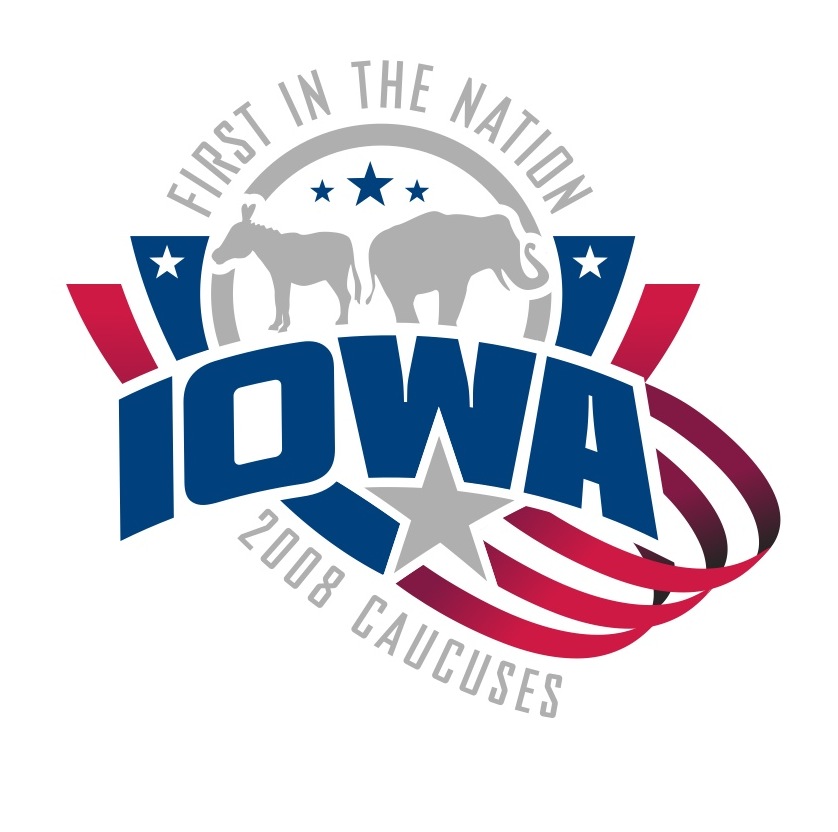How it Works in Iowa
By Kevin Robinson in News on Jan 3, 2008 4:10PM
After running around the state for months (and in some cases, years) the big day for presidential wannabes has finally come: The Iowa Caucuses. This presidential ritual comes around every four years, and while most of the nation watches, a Midwestern state makes the first pick for the presidential nomination.
 So what's so special about Iowa that they get to go first? In the late 1960s, the Iowa Democratic Party ruled that at least 30 days had to pass between the caucus and the district conventions, and again another 30 days between the district conventions and the state convention. This was intended to give the party enough time to work out the details of their state convention. Since the 1972 Democratic state convention was set for May 20, the earliest that a caucus could be held was January 24, before the New Hampshire primaries.
So what's so special about Iowa that they get to go first? In the late 1960s, the Iowa Democratic Party ruled that at least 30 days had to pass between the caucus and the district conventions, and again another 30 days between the district conventions and the state convention. This was intended to give the party enough time to work out the details of their state convention. Since the 1972 Democratic state convention was set for May 20, the earliest that a caucus could be held was January 24, before the New Hampshire primaries.
In each of the 1,784 precincts in Iowa, voters head to their caucus location, usually a church, school or gymnasium, but also private residences. If you want to register to vote when you get there, you can, and you can caucus if you will be 18 by November 4, 2008. The doors close at 7p.m. sharp; if you don't get there on time, you can't to participate. Each precinct has a set number of delegates, assigned by party rules that change from time to time. Simple enough, but from this point forward, which party you are caucusing for determines how complex the process is. Here's how it works:
For Democrats, after the doors close, the Precinct Chair counts the people in the room and, using a complex formula based on turnout in the last two general elections determines how many supporters a candidate needs to make the first round, or "viability" - generally 15 percent. During the process called "alignment," precinct captains speak in favor of their candidates and the audience breaks into preference groups to determine which candidates will be cut. The supporters of the viable candidates then get to make a pitch for the supporters of nonviable candidates, and those supporters can switch allegiance or go home. The winner of the precinct, just like in the Electoral College, gets all the delegates in the precinct. Those delegates go on to the county convention, the district convention and then on to the state convention, where the state's nominee is chosen, and those delegates go on to the national convention to pick the nominee.
For Republicans the process isn't quite as complex. The Republican caucuses follow the Ames Straw Poll, which takes place only in years where there is no Republican incumbent. Just like in the Democratic caucuses, the doors close at 7PM, and Precinct Captains make their pitch for their candidate. Unlike the Democratic caucuses, however, Iowa Republicans cast a secret ballot, writing their favored candidate on a blank piece of paper and putting it in a ballot box. Those votes are counted and sent to the state party. Just like the Democrats, the Republicans go through a series of local conventions leading up to the national nomination.
The caucuses only take a few hours, but the ground work and strategy required to win enough delegates takes months. Although winning the caucuses in Iowa doesn't guarantee the nomination or even the presidency, their importance isn't lost on the candidates. In 1972 George McGovern took advantage of it and campaigned hard in Iowa, coming in second to Edmund Muskie. The media buzz and sense of momentum carried him to the Democratic nomination that year. Jimmy Carter did it again in 1976, and the Iowa state Republican Party followed suit, setting their caucus on the same night as the Democrats, sealing the new tradition of Iowa as the first "non-primary state" to choose their delegates in the nation.